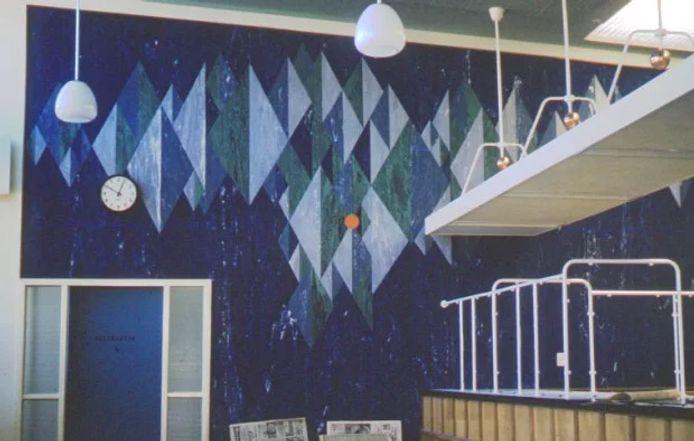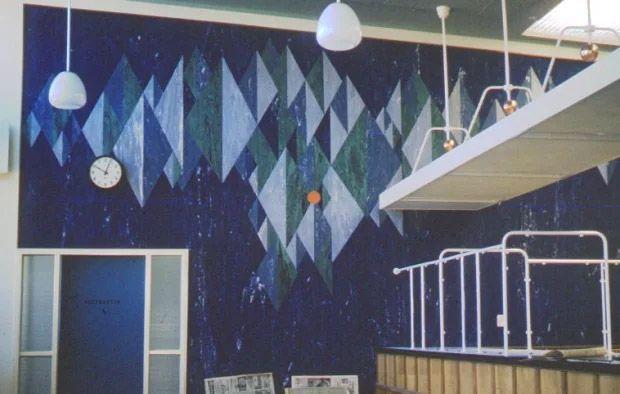Untitled [Naenae Post Office]
Guy Ngan
Type
- Mural
Medium
- Linoleum
Dimensions
- Approx. H5400mm x W6400mm

Guy Ngan, 'Untitled [Naenae Post Office]' (1959), Naenae, Awakairangi Lower Hutt.
Source: Guy Ngan, courtesy of the Ngan family.

- DETAILS
- MAP
Description
Mid-century New Zealand was marked by the end of both the depression and WWII. An urgent need for housing struck the country and inspired the government to implement a plan to construct thousands of houses. Lower Hutt was one beneficiary of the plan and several suburbs sprung up each with their shopping centres in Epuni, Taita, and Naenae.
Designed by Viennese émigré architect Ernst Plischke, Naenae’s Hillary Court opened in 1954 with the Naenae Post Office as the centrepiece of what may have been New Zealand’s first pedestrianised shopping mall. The design of the Post Office building was handled by architect Walter Frederic Charles Vine, under the supervision of Government Architect Gordon Wilson. Hon Michael Mocham, Post Master General, laid the foundation and opening plaques. The contractor was J M Construction, and the building was officially opened on 4 December 1959.
During this time Guy Ngan was employed full-time at the Ministry of Works Architectural Division as a design consultant. In this capacity he was invited to to create a site-specific work for the main public-facing area. The artwork he created is unique in Ngan’s oeuvre as it is the only known linoleum work (most of his public murals and sculptures were constructed from concrete, aluminium, and tile); it is a colourful work (also rare for his public artworks); and it is the only known two-dimensional public artwork that Ngan made for the Hutt Valley. Linoleum was a popular mid-century flooring product created primarily from linseed oil and sawdust, albeit with traces of lead. Highly durable, it was applied in a range of commercial and domestic settings. Renowned as a thrifty creative, it is possible that Ngan made this mural from linoleum offcuts.
The Naenae branch of the Post Office closed in 2015, however the mural had already disappeared by this time. Records show that additions, alterations and general “redecoration throughout” occurred in 1984 and this may have included removal of the mural.
In late May 2024, a replica of the artwork will be unveiled in the renovated former post-office, which has been converted a Community Centre. While the original mural was made of linoleum, the architects of the redeveloped site, HDT, have created a replica out of Autex acoustic panels. This updated work faithfully recreates the colours, dimensions, and position of the original work and has been installed on the same wall as the original work in the main public area of the centre.
See also:
- 'A Lost 65-year-old Mural Brought Back To Life In Naenae', Press Release: Hutt City Council, 1 May 2024
